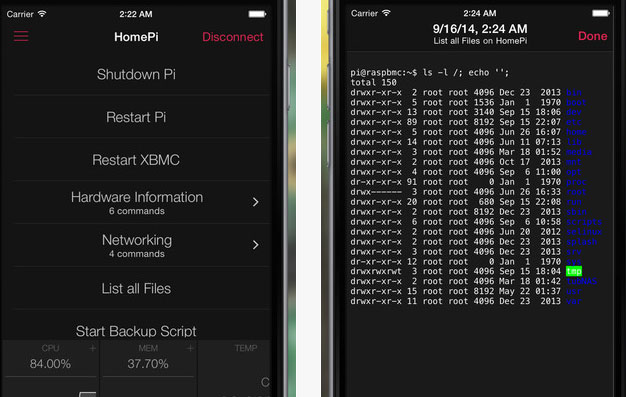

Power up and log into your Raspberry Pi via WiFi or ethernet, then enter route -ne at the command prompt to see your network routing information: If you already know what it is, just skip this step. The computers on your network use it to communicate with the router and access the internet. This is the local IP address of your network router. The first step is to find out your default gateway IP. If you only need one or the other, just omit the code below for the connection you don’t need. In this tutorial we’ll set up static IP’s for both WiFi and ethernet connections.


ISTAT SERVER ON RASPI HOW TO
Check out our tutorials How to Set Up WiFi on the Raspberry Pi and How to Set Up a Raspberry Pi Without a Monitor or Keyboard to see how to do that if you haven’t already. Setting up a Static IP on the Raspberry Piīefore starting, make sure you’ve already set up and configured a way to access the command prompt. With a static IP, you’ll be able to use the same IP address every time you connect to your Pi. This makes it more reliable when using services that depend on a stable internet connection, like online gaming, VOIP, or remote desktop applications. Static IPĪ static IP (as you could probably tell by the name) is one that doesn’t change. A program installed on your network router called the dynamic host configuration protocol (DHCP), automatically changes and assigns new dynamic IP addresses to computers on your network. A dynamic IP can change every time you log in, or only at certain intervals. If a hacker gets access to your IP address, you’ll be less vulnerable to attack since your IP changes frequently. Dynamic IP Dynamic IPĭynamic IP’s are good to use if you’re concerned about security. It covers all of the steps and code you need to get started. BONUS: I made a quick start guide for this tutorial that you can download and go back to later if you can’t set this up right now. just take into consideration that for more than a year a completely broken package was/is in the official line in qnap and noone either fixed or removed it. It would be great if someone would fix it by compiling a -static binary for istat server with the correct locations for the config files, but I would not hope much. I don't get how to integrate it in the toolchain first. The binary throws this info with "file istatd": iStatd: ELF 32-bit LSB executable, Intel 80386, version 1 (SYSV), dynamically linked, interpreter /lib/ld-linux.so.2, for GNU/Linux 2.6.8, with debug_info, not stripped So what now? There is a very recent working package for Synology ( ) which is 64 Bit, but just moving the binary to a 64Bit Intel QNAP doesn't do the trick (i just tried) due different location demands of the config files ( but it runs!) and alas, cross-compiling for qnap has been (too) complicated (for me) because of the dependencies of iStatserver, mainly libxml2. The curators of the qnap Packages didn't remove the iStat package for whatever reason.
ISTAT SERVER ON RASPI SOFTWARE
Most likely since a user needs to purchase/own the commercial client software to use it find out it does not work.
ISTAT SERVER ON RASPI 64 BIT
Hey patricepm, since QNAP switched to 64 Bit the package has been broken and no-one took an issue with that.


 0 kommentar(er)
0 kommentar(er)
